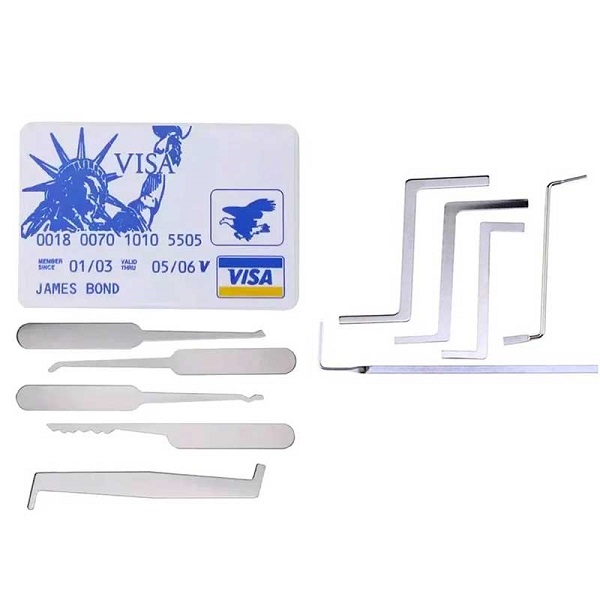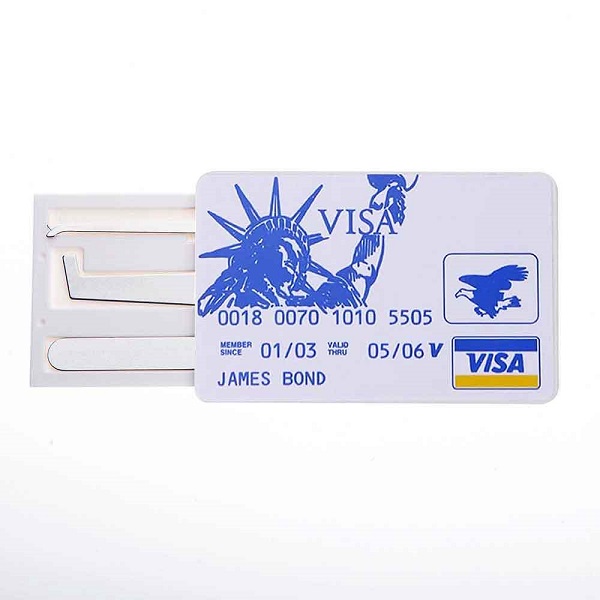Credit Card Lock Pick Set Guide: How to Practice Without Damaging Locks
2025-08-26 13:34
Lock picking is a fascinating skill that combines patience, precision, and a deep understanding of mechanical systems. While often associated with locksmiths or security professionals, it has grown in popularity among hobbyists and enthusiasts. For those starting out, using a credit card lock pick set can be an excellent way to learn the basics. These sets are compact, portable, and designed to mimic the tools used by professionals. However, practicing responsibly is crucial to avoid damaging locks. This guide will explore how you can develop your lock picking skills effectively and ethically, without causing harm to any locking mechanisms. Buy Credit Card Lock Pick Set from reputable suppliers to ensure you have high-quality tools that make learning easier and more efficient.
What is Credit Card Lock Pick?
A credit card lock pick set is a compact, often foldable toolkit designed to resemble the size and shape of a credit card, containing essential tools such as tension wrenches, picks, and rakes. These sets are typically made from durable materials like stainless steel and are engineered for portability and discretion, making them ideal for beginners or travelers who want to practice lock picking without carrying bulky equipment. The tools included are specifically crafted to manipulate the pins and mechanisms within standard pin tumbler locks, allowing users to learn the fundamentals of lock picking in a controlled and non-destructive manner.

How Can You Practice Lock Picking Without Causing Damage?
1. Use Practice Locks and Transparent Training Models
One of the most effective ways to practice lock picking without causing damage is to use dedicated practice locks or transparent training models. These locks are specifically designed for learners, featuring clear housings that allow you to see the internal mechanisms, such as pins, springs, and shear lines, as you manipulate them. By observing how the tools interact with the components, you can develop a tactile understanding of tension and picking techniques without the risk of damaging functional locks. Practice locks often come with adjustable difficulty levels, enabling you to start with simple setups and gradually progress to more complex configurations. This approach not only builds your skills safely but also reinforces good habits, such as applying consistent tension and identifying binding pins, which are essential for ethical lock picking.
2. Apply Proper Tension and Tool Control Techniques
Applying the correct amount of tension is critical to avoiding damage when lock picking. Excessive force can bend or break pins, warp springs, or even damage the lock cylinder, while insufficient tension may prevent you from setting the pins properly. To practice without harm, use a light and consistent touch, typically with the tension wrench applying just enough pressure to hold the pins in place once set. Focus on tool control by practicing on training locks first, where you can learn to feel for subtle feedback like clicks or vibrations that indicate successful pin manipulation. Additionally, always use high-quality tools from a credit card lock pick set, as poorly made picks can scratch or jam the lock mechanisms. By mastering tension and control, you minimize wear and tear on locks, ensuring that your practice remains non-destructive and educational.

3.Utilize Lubrication and Maintenance
Lubrication plays a key role in preventing damage during lock picking practice. Dry or corroded locks can be more prone to damage because pins may stick or require excessive force to move. Applying a small amount of graphite-based or silicone-based lubricant to the lock cylinder before practicing can reduce friction, allowing tools to glide smoothly and minimizing the risk of abrasion or breakage. However, avoid over-lubrication, as it can attract dirt and lead to clogging. Alongside lubrication, regular maintenance of your tools and practice locks is essential; inspect them for signs of wear, such as bent picks or worn pins, and replace components as needed. This proactive approach ensures that both your tools and the locks remain in good condition, making your practice sessions safe and sustainable.

4. Follow Ethical Guidelines and Practice on Owned Locks
Ethical practice is fundamental to avoiding damage and legal issues. Always practice on locks that you own or have explicit permission to use, such as old locks from hardware stores or dedicated training sets. Never attempt to pick locks in use, like those on doors or storage units, as this could lead to accidental damage or legal consequences. By restricting your practice to owned or discarded locks, you create a risk-free environment where mistakes won’t cause harm. Additionally, adhere to a code of conduct that emphasizes respect for property and security; this mindset not only protects others but also encourages a disciplined approach to learning, where the focus is on skill development rather than reckless experimentation.
In conclusion, learning lock picking with a credit card lock pick set can be a rewarding and safe experience when approached with the right methods and mindset. By using practice locks, mastering tension control, maintaining your tools, adhering to ethical guidelines, and progressing gradually, you can develop proficiency without causing damage. Remember, the goal is to understand and appreciate the mechanics of locks, not to compromise security. For those on a budget, a Cheap Credit Card Lock Pick Set can be a practical starting point, but always prioritize quality and responsibility to ensure effective and harmless practice.

 Like Us on Facebook to enjoy 5% discount
Like Us on Facebook to enjoy 5% discount